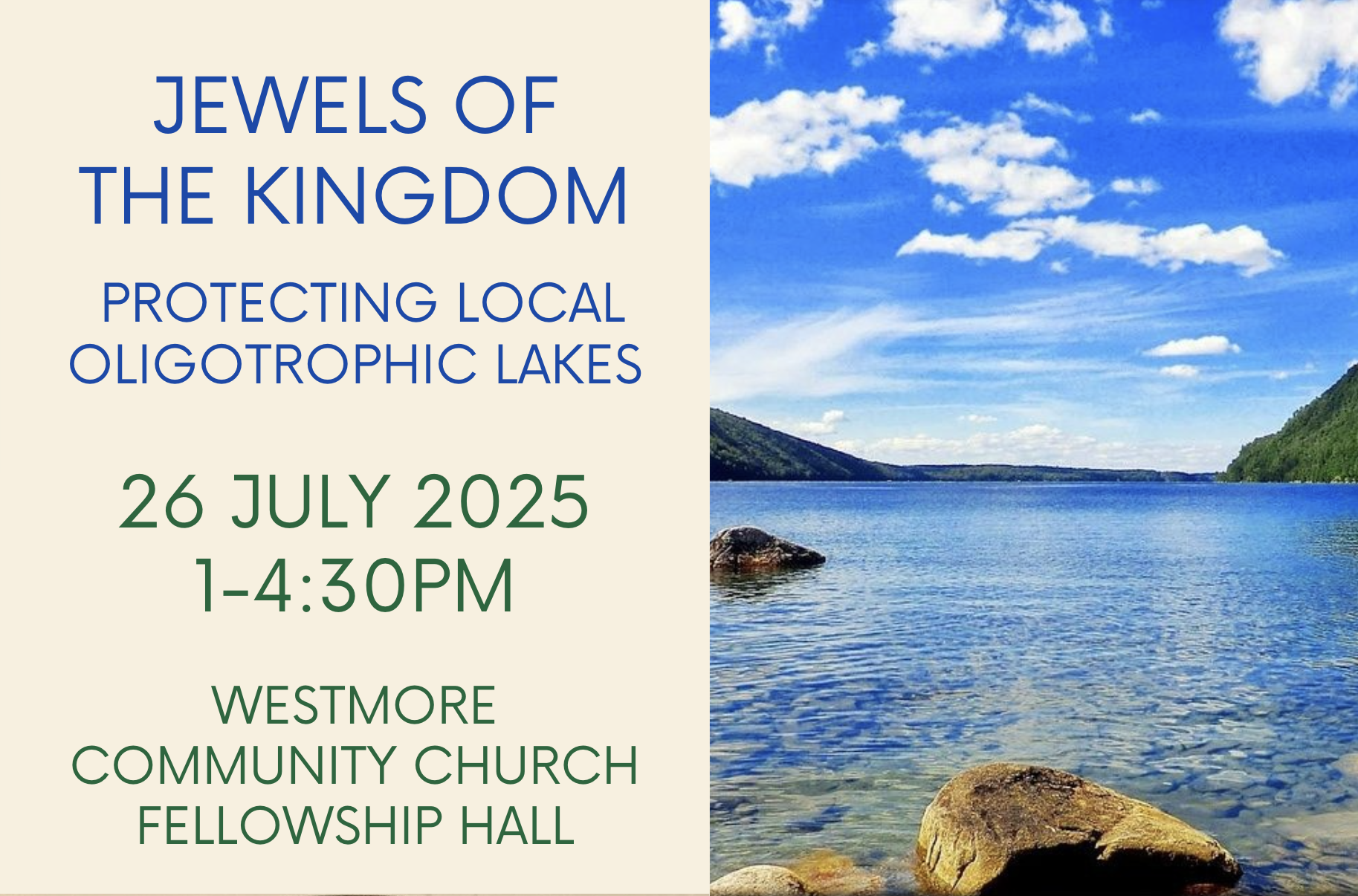Oligotrophic Lakes: Jewels of the Kingdom
Did you know that Vermont is home to one of the highest proportions of oligotrophic lakes in our nation? An oligotrophic lake is characterized by high water clarity, cold temperatures, low nutrient levels, and low plant growth.
Unfortunately, a combination of poor watershed health and shoreline development, combined with more frequent extreme precipitation and runoff events, is imperiling these unique and beautiful homes to freshwater species across the country. In Vermont, we still have time to save the best of our lakes through responsible stewardship and best management practices.
In July 2025, we hosted a workshop at Lake Willoughby to share with community members about the ecological significance of oligotrophic lakes, the threats posed to them by climate change and human development, and how lake communities can act to protect them. Help us preserve these deep, cold, clean lakes by learning about them!
Here are the slides from the presentation:

Why You Might Want to Help Save Vermont’s Oligotrophic Lakes- Kellie Merrell, VTDEC Aquatic Ecologist
How to Protect Local Lakes - Will Marlier, OCNRCD Lake Watershed Program Specialist
Vermont Aquatic Plants of Oligotrophic Ponds - Aaron Marcus, Wetland Scientist & Botanist
NEK Oligotrophic Lake Fisheries - Jud Kratzer, VTFWD Fisheries Biologist
Speaker bios:
*VTDEC Aquatic Ecologist, Kellie Merrell. Kellie is a passionate scientist who has been monitoring Vermont’s inland lakes and ponds for compliance with the Clean Water Act since 2001. She has a lot to share about our precious NEK lakes.
*VTFWD Fisheries Biologist, Jud Kratzer. Jud manages all Northeast Kingdom fisheries from brook trout to Northern pike including organizing fisheries data storage and analysis, trout habitat restoration projects and public outreach on fisheries topics.
*DuBois & King Wetlands Botanist, Aaron Marcus. Aaron has 17 years of extensive experience in aquatic plant inventory and monitoring across a variety of lake and pond types and nutrient settings in Vermont as well as developing better monitoring methods for RTE aquatic species statewide.
